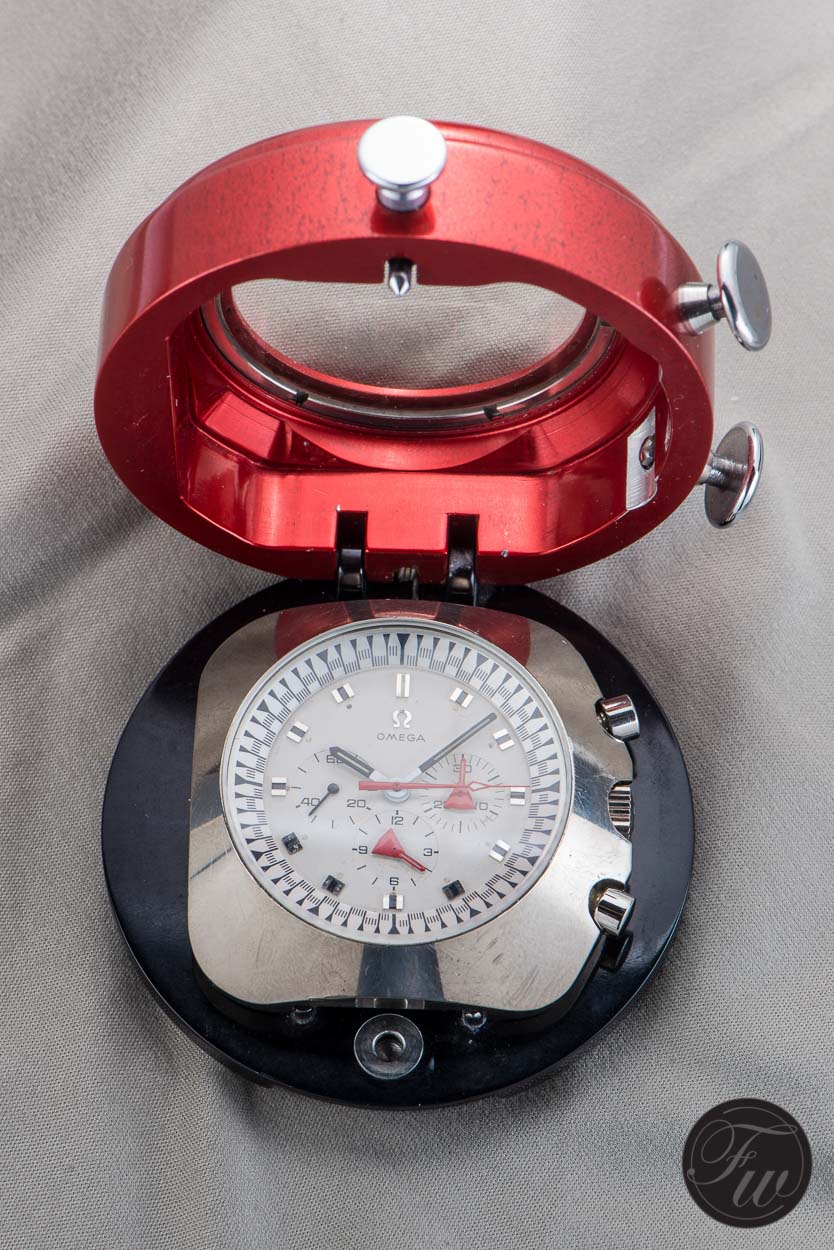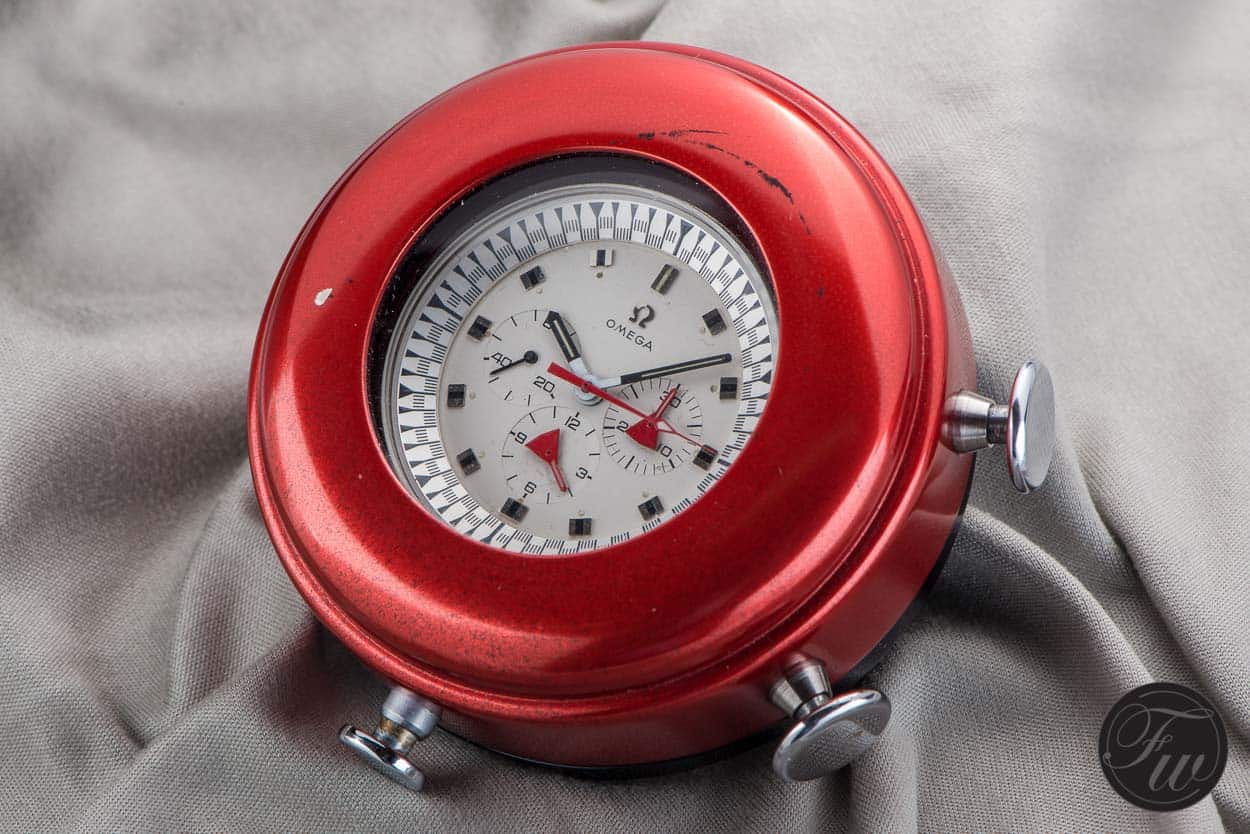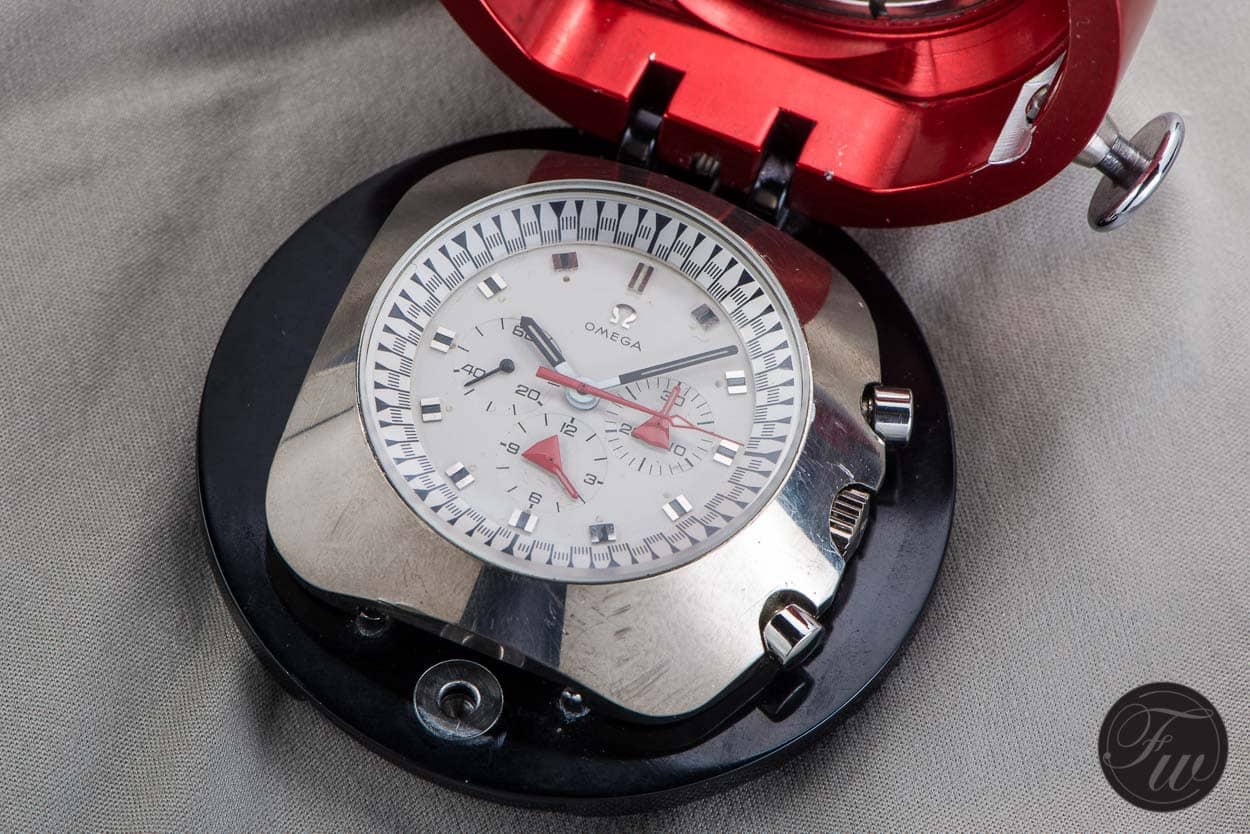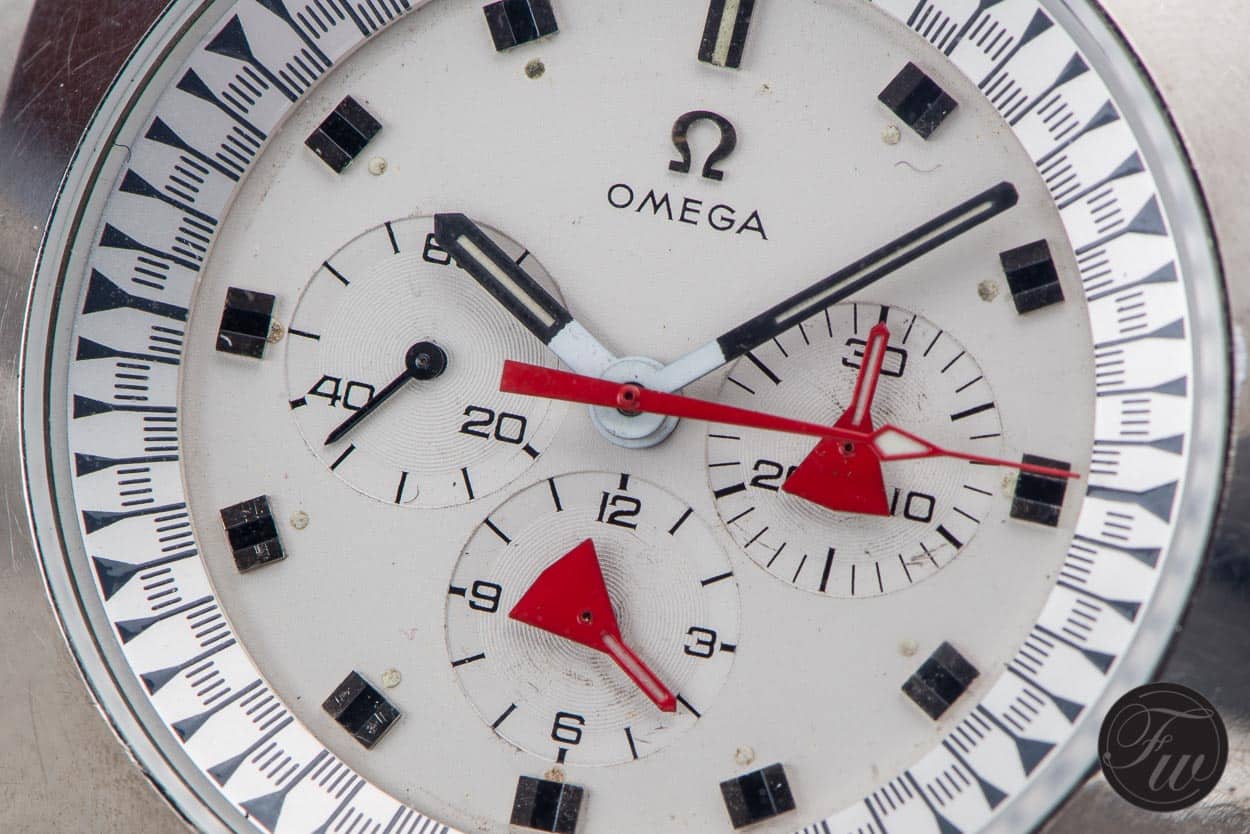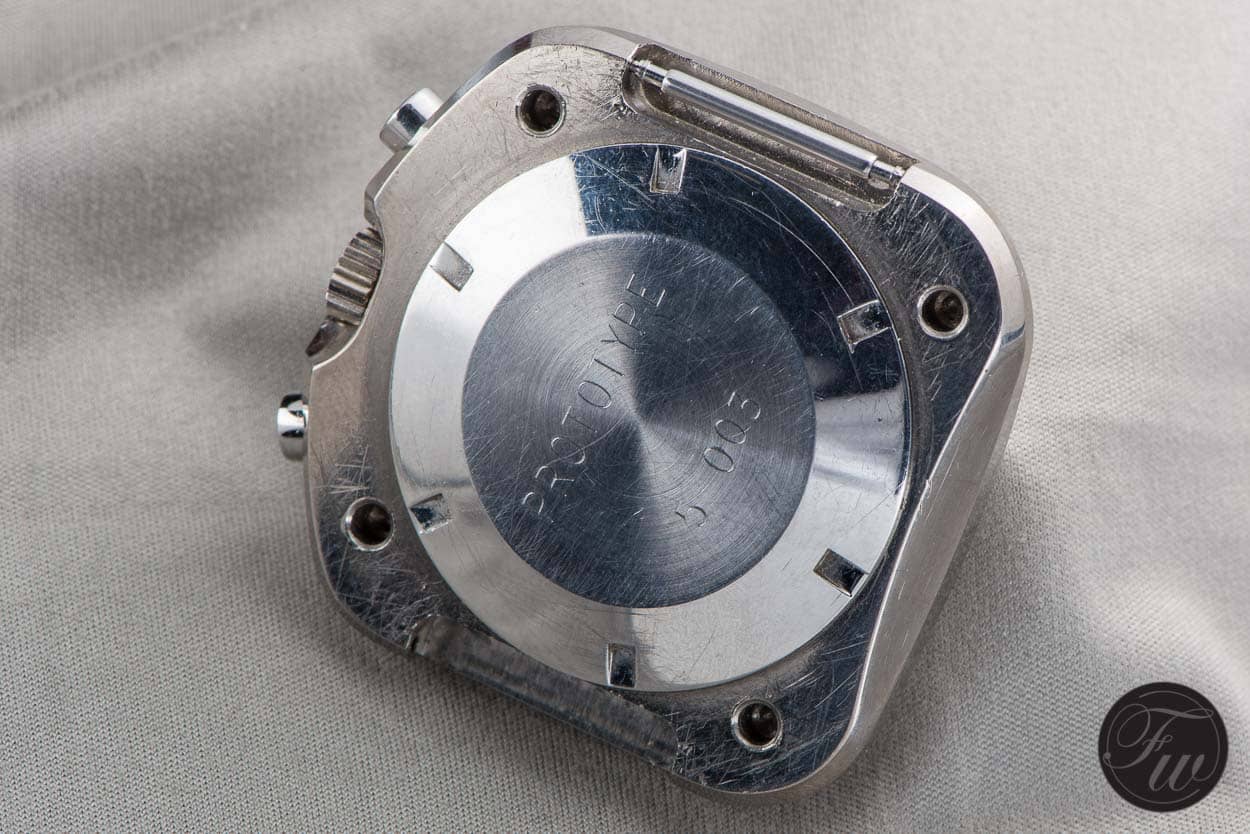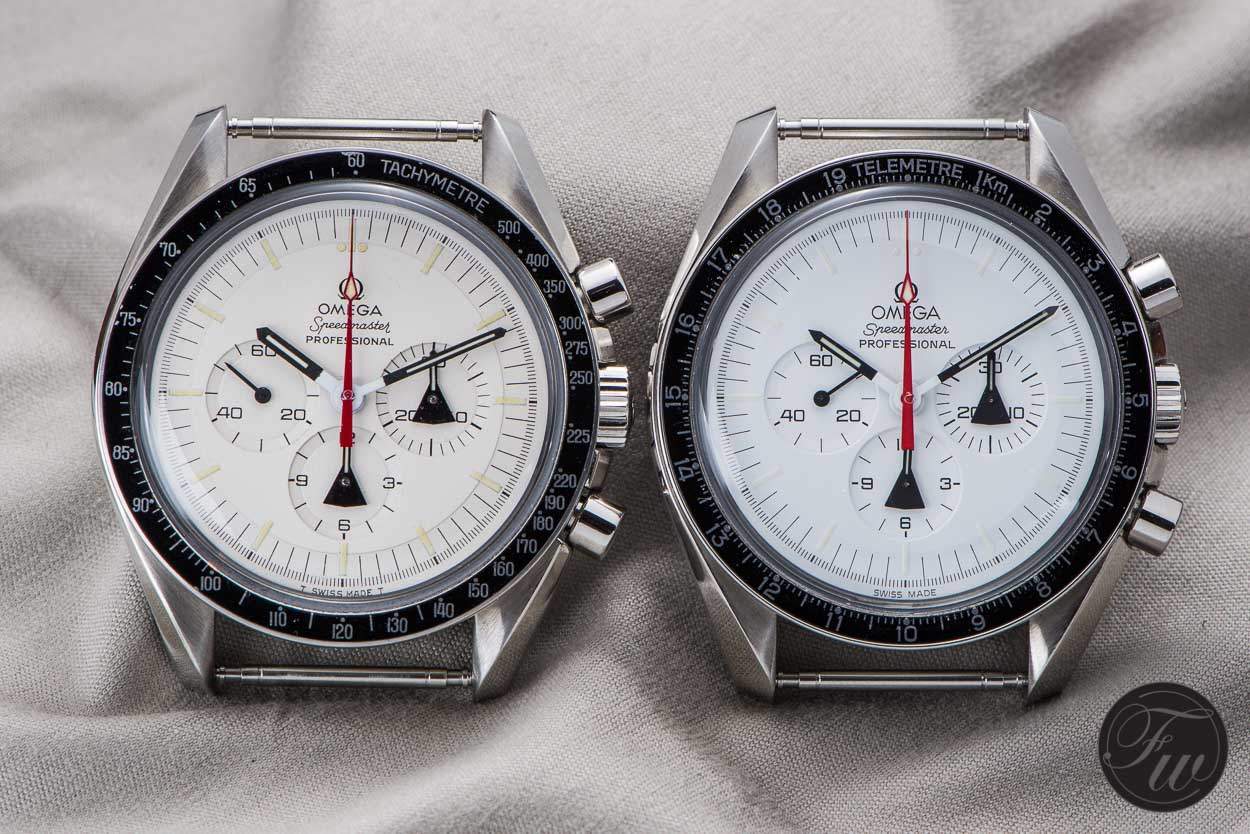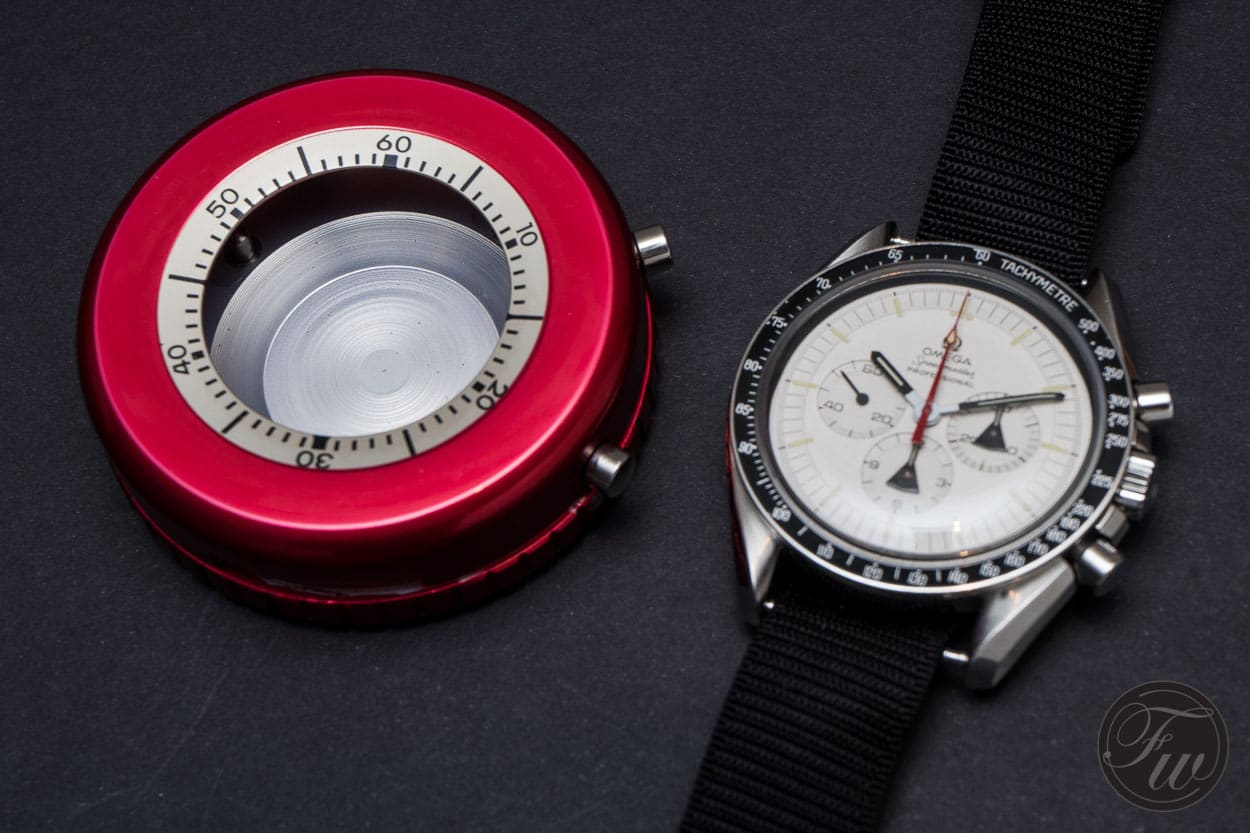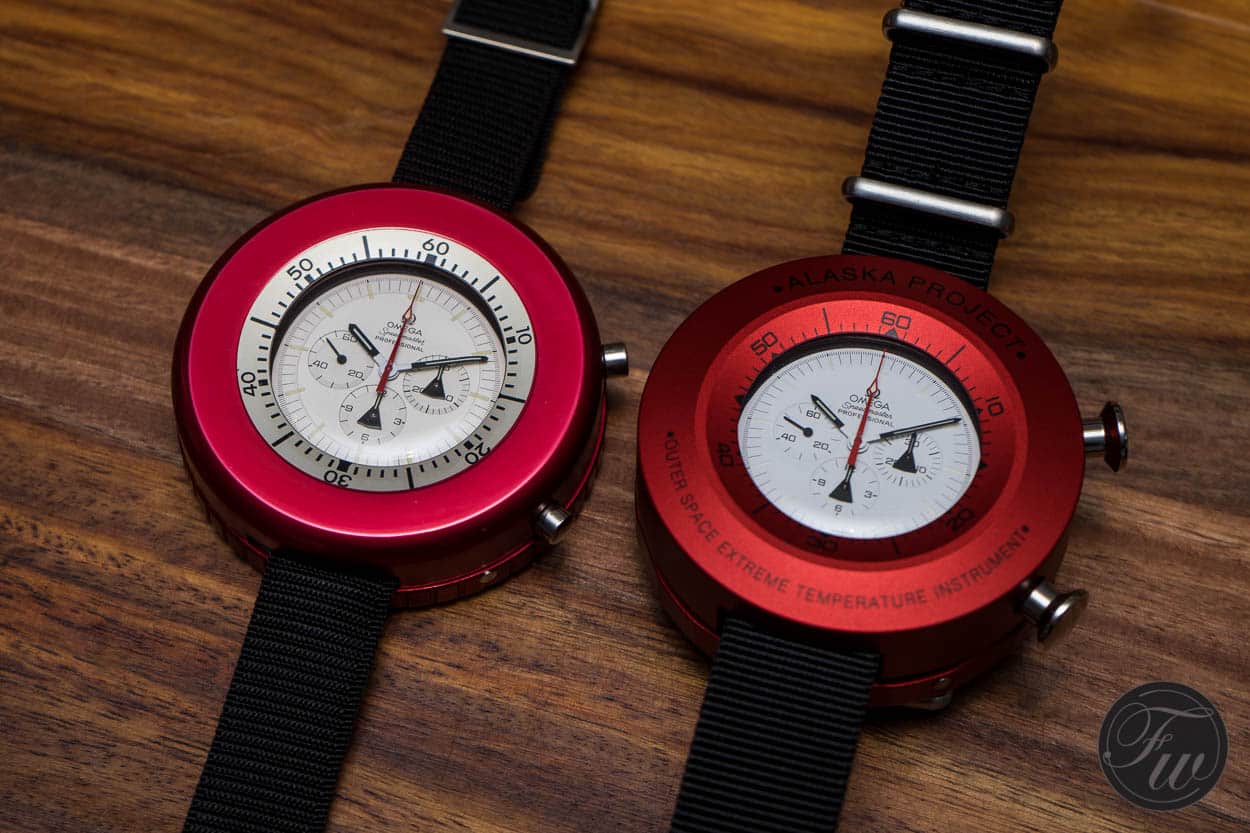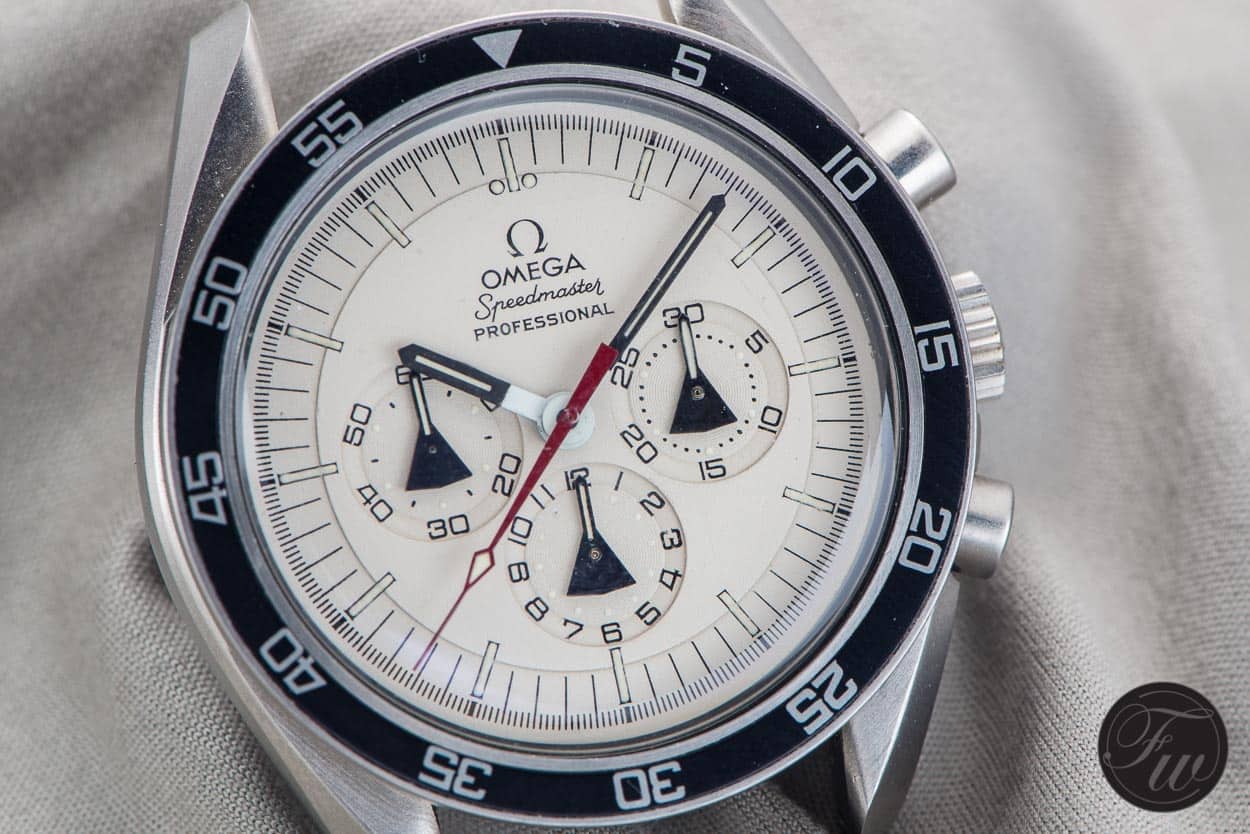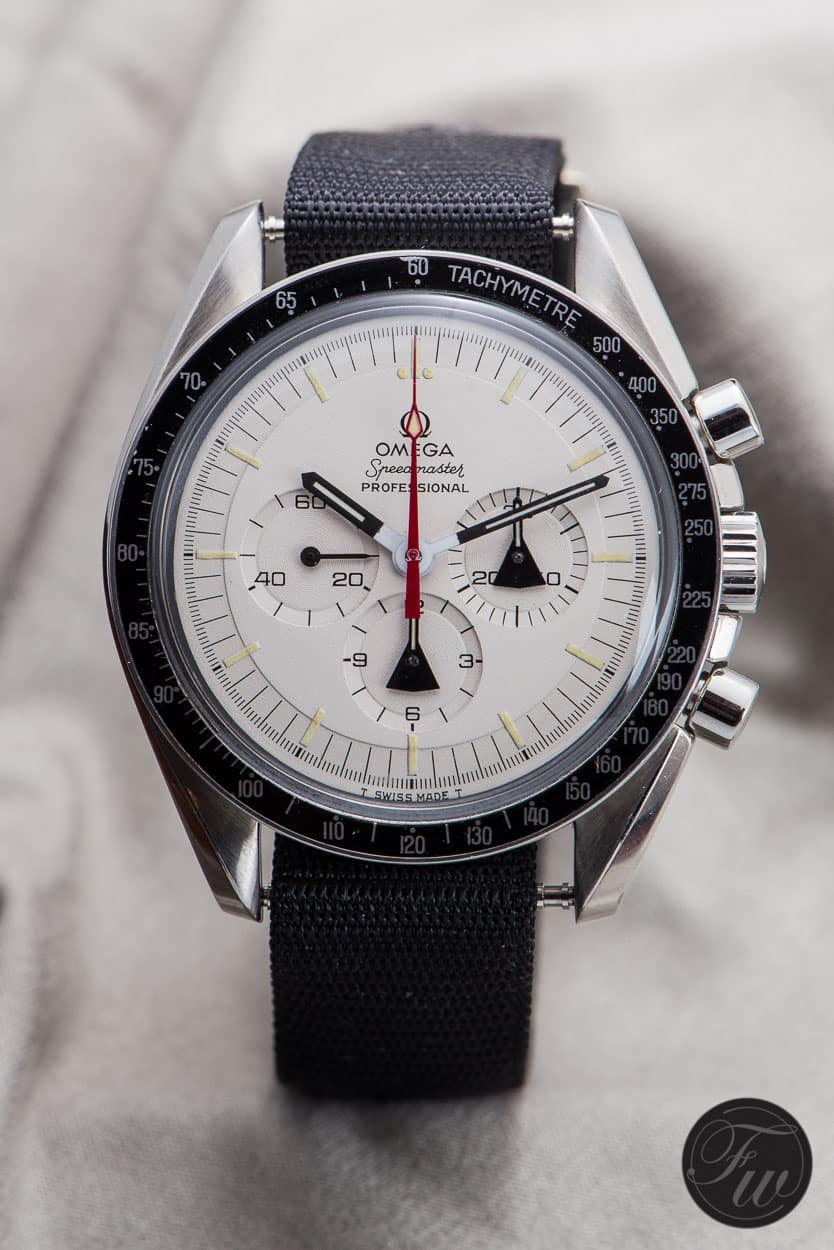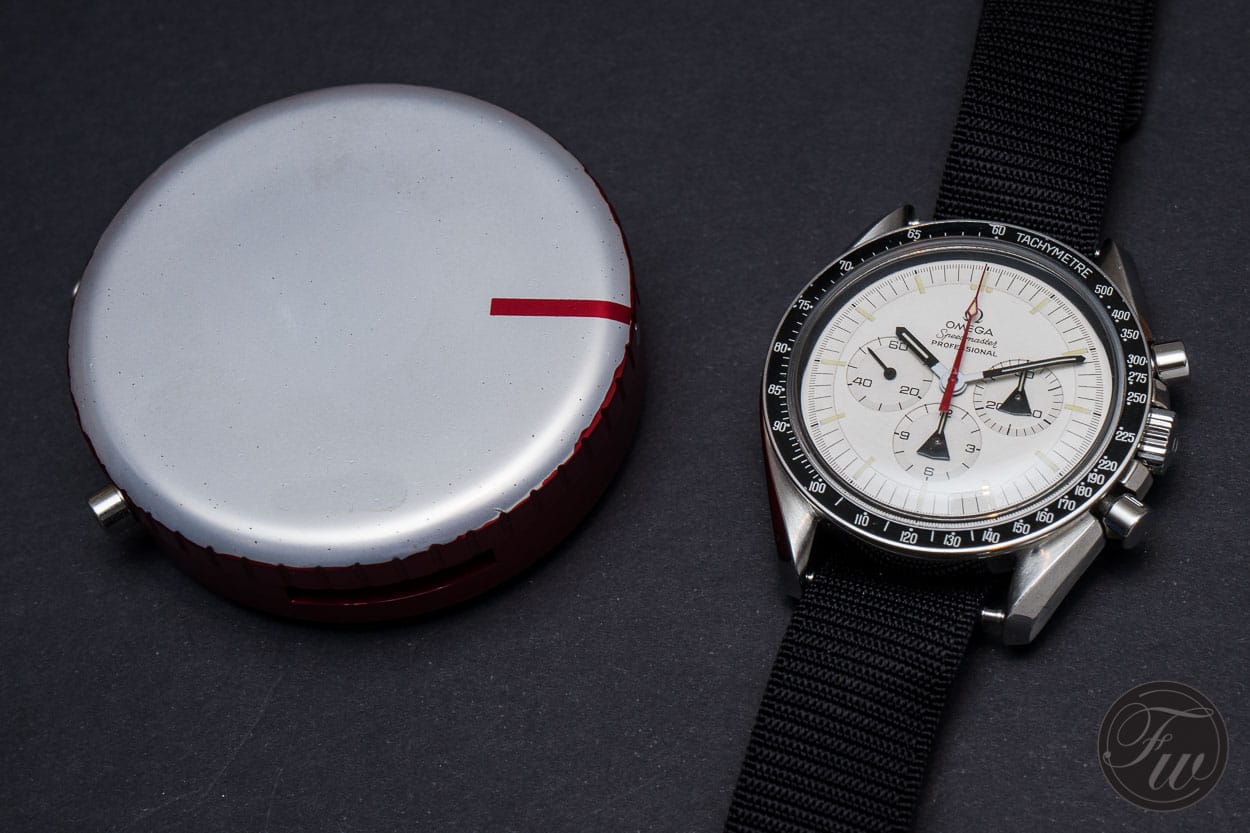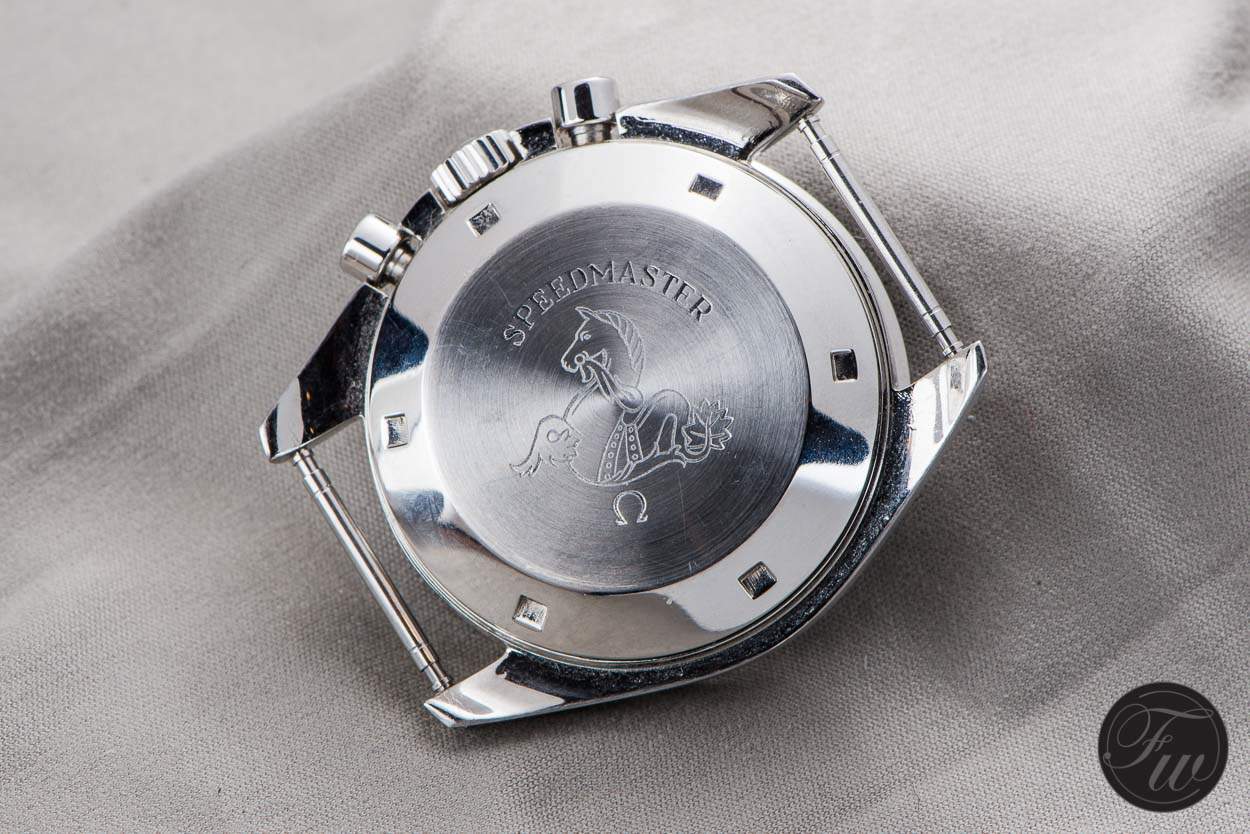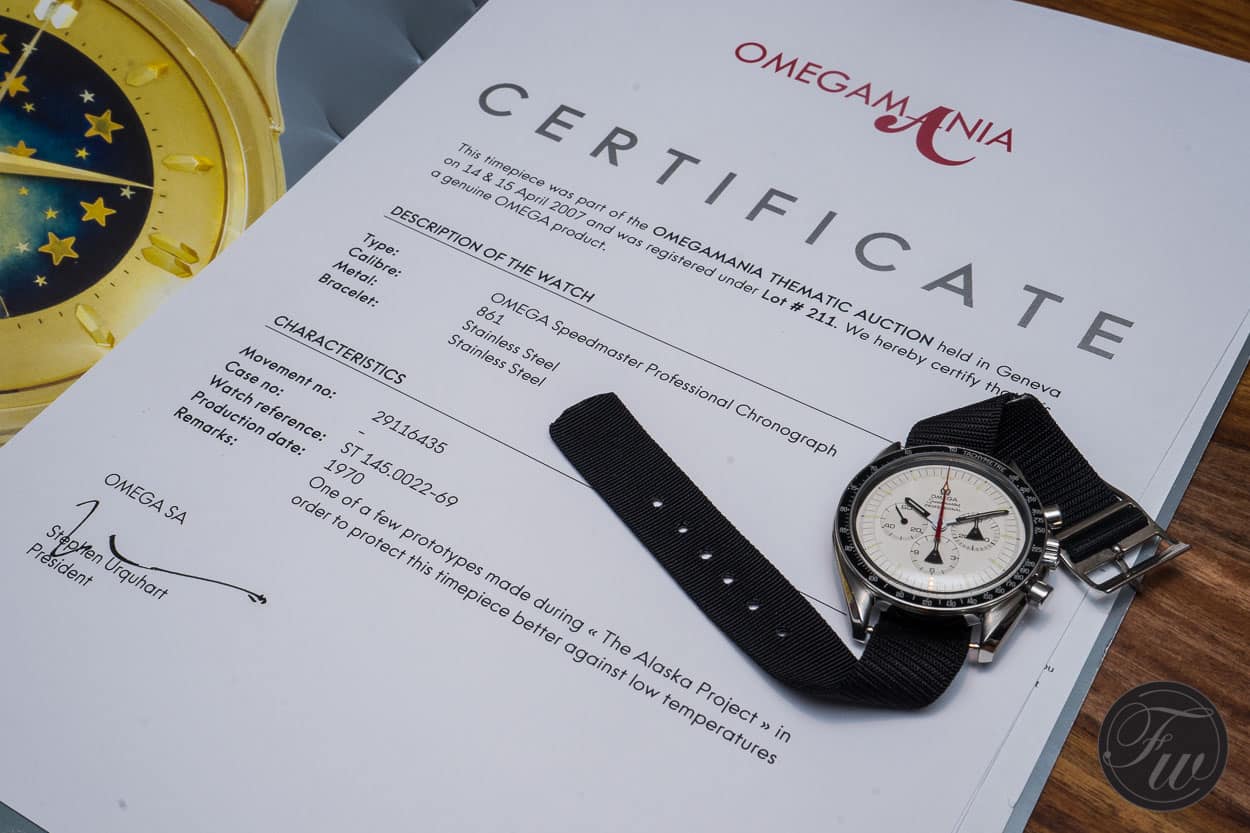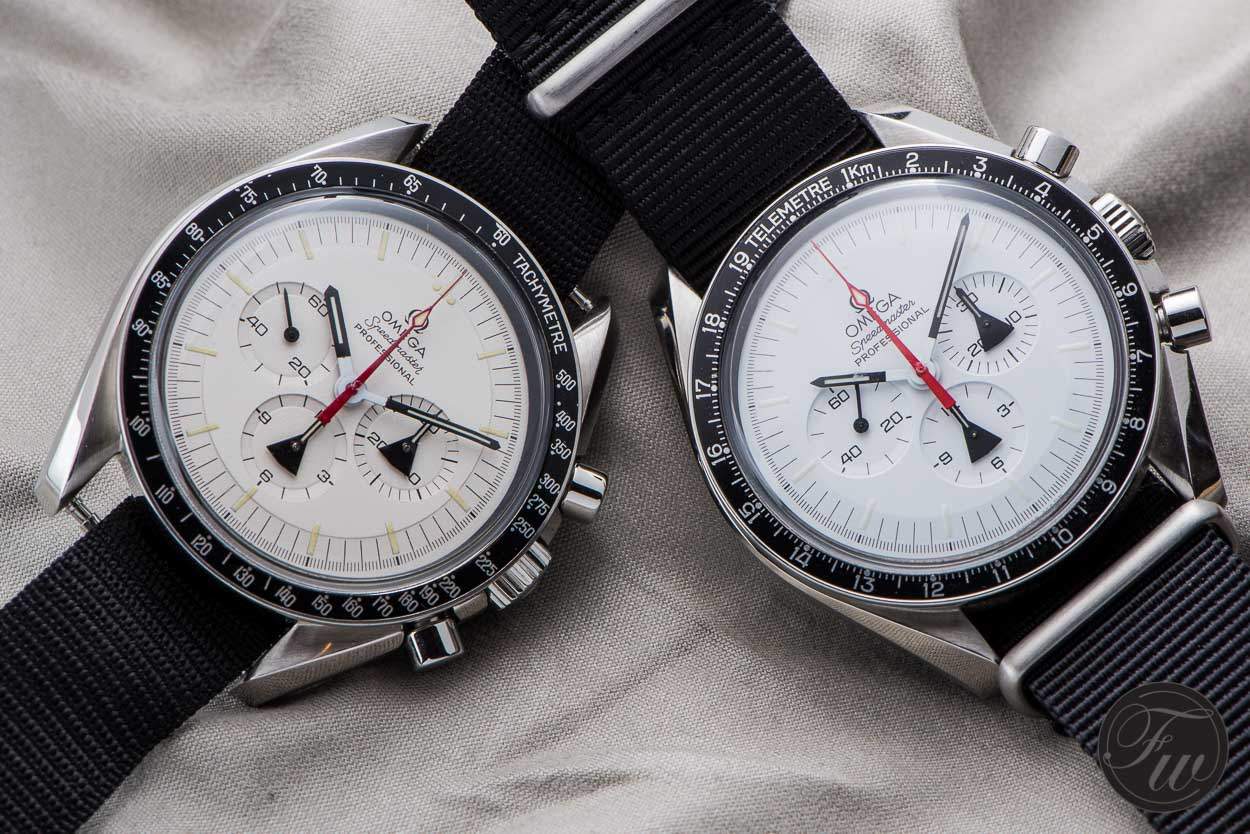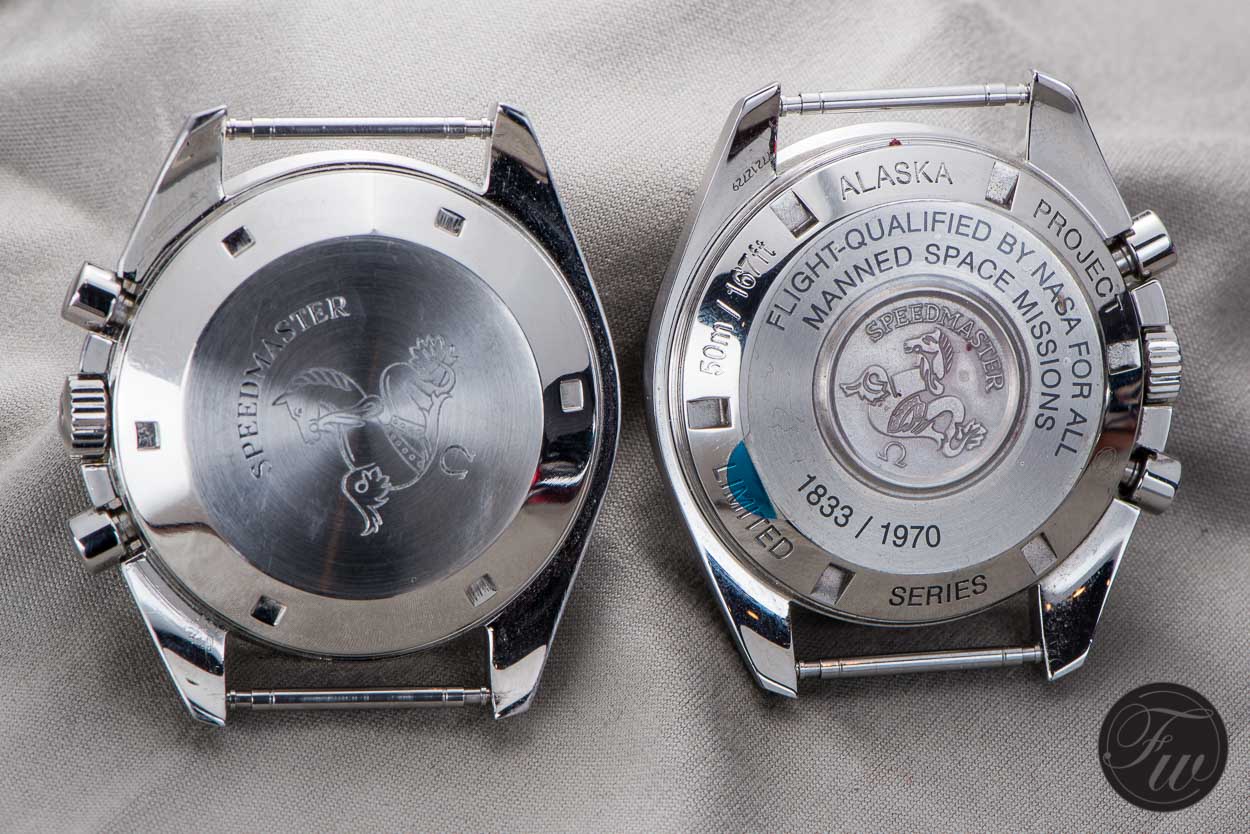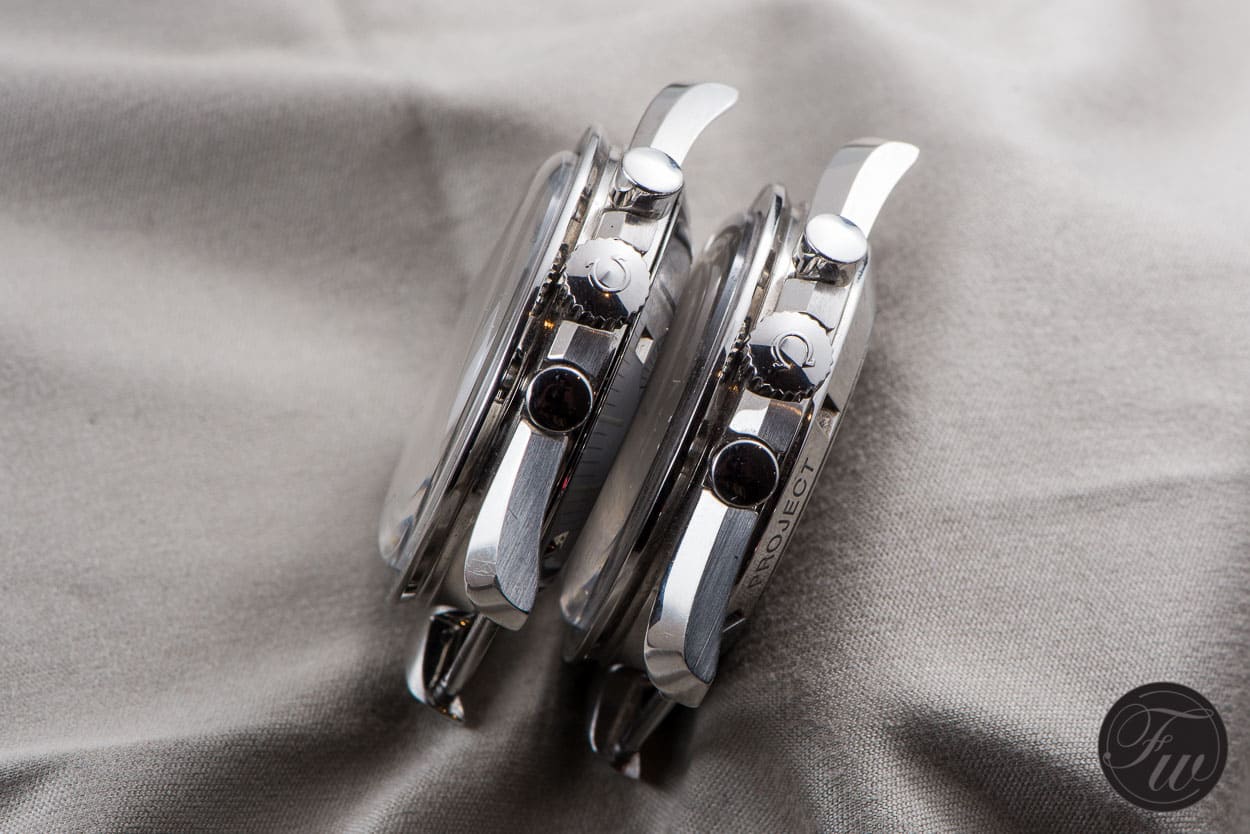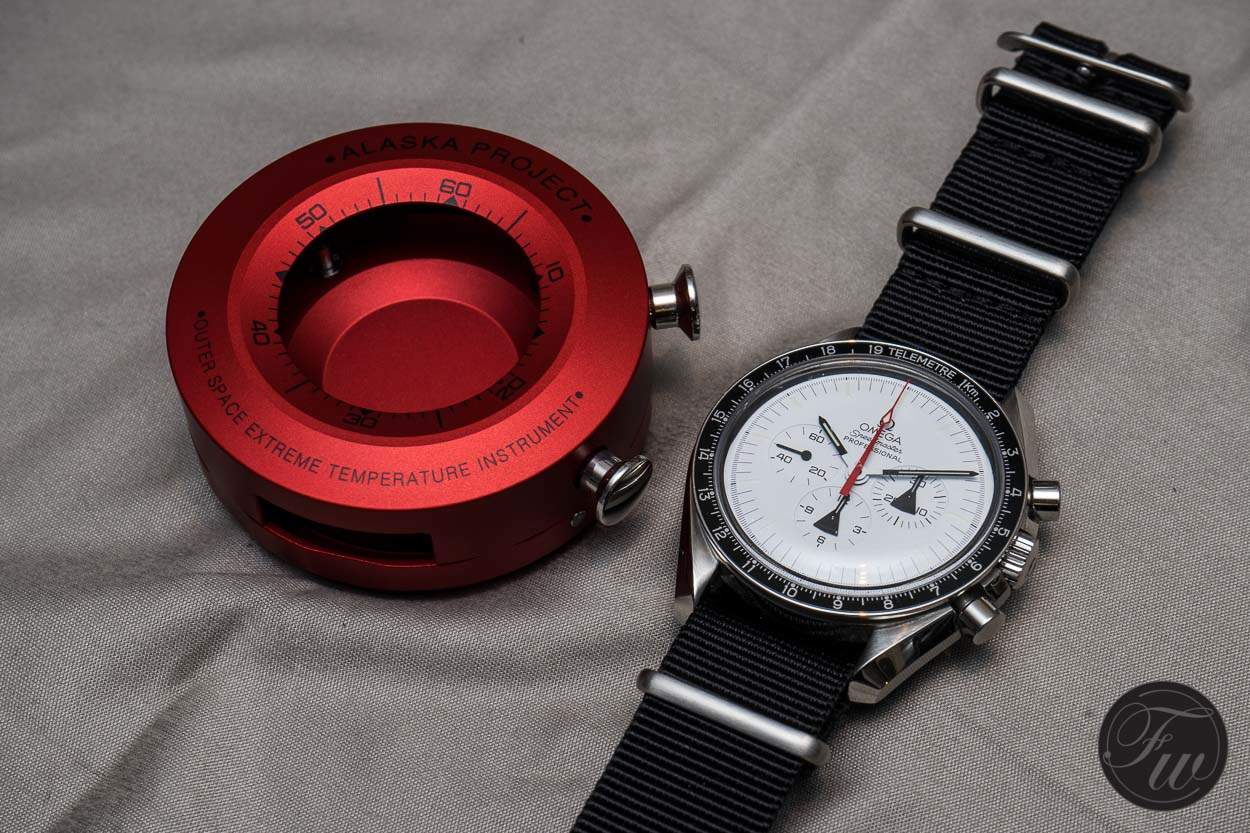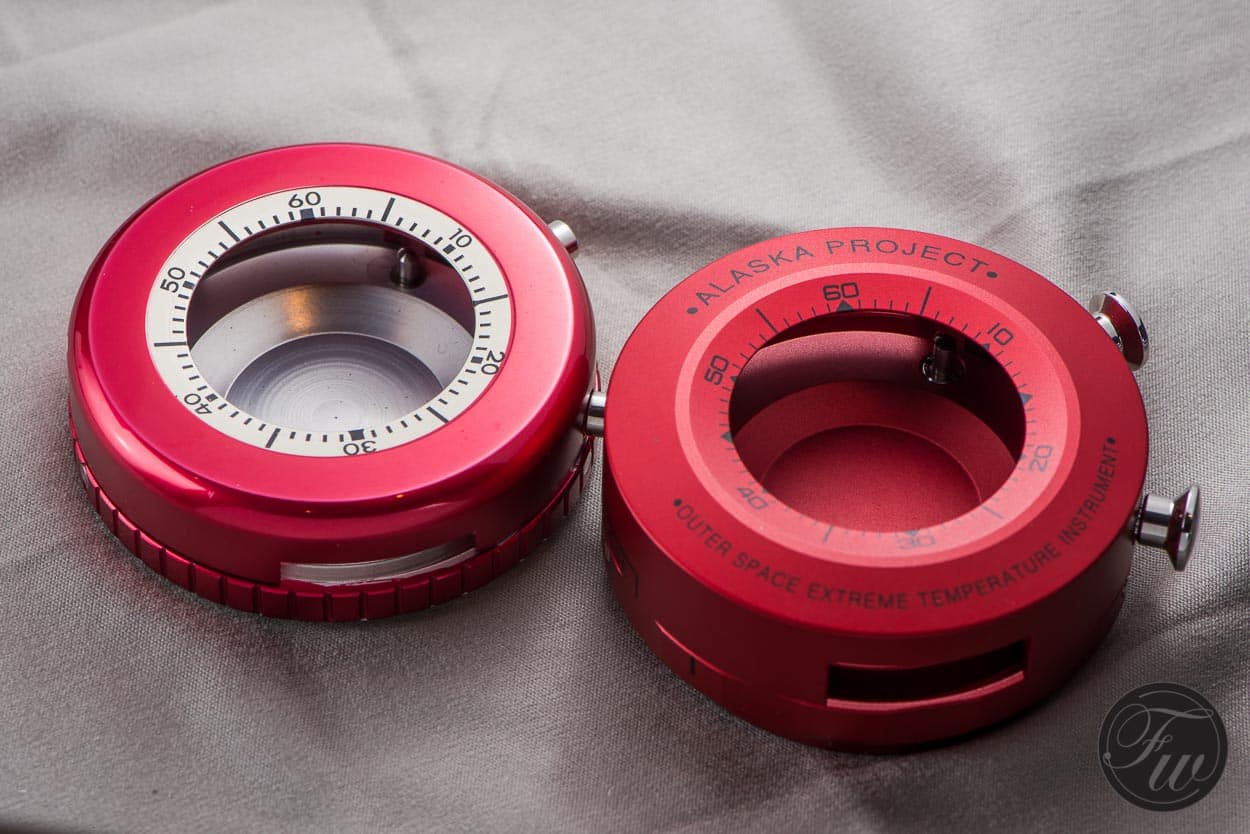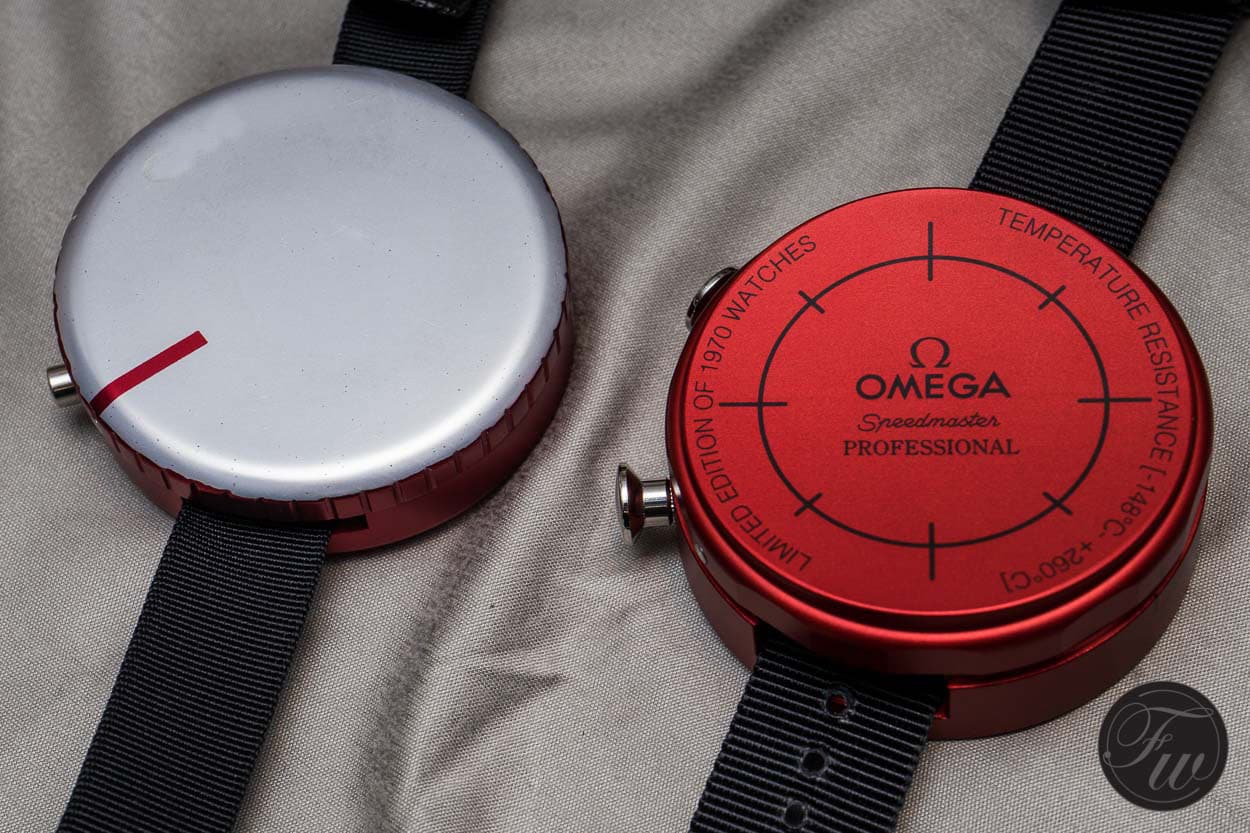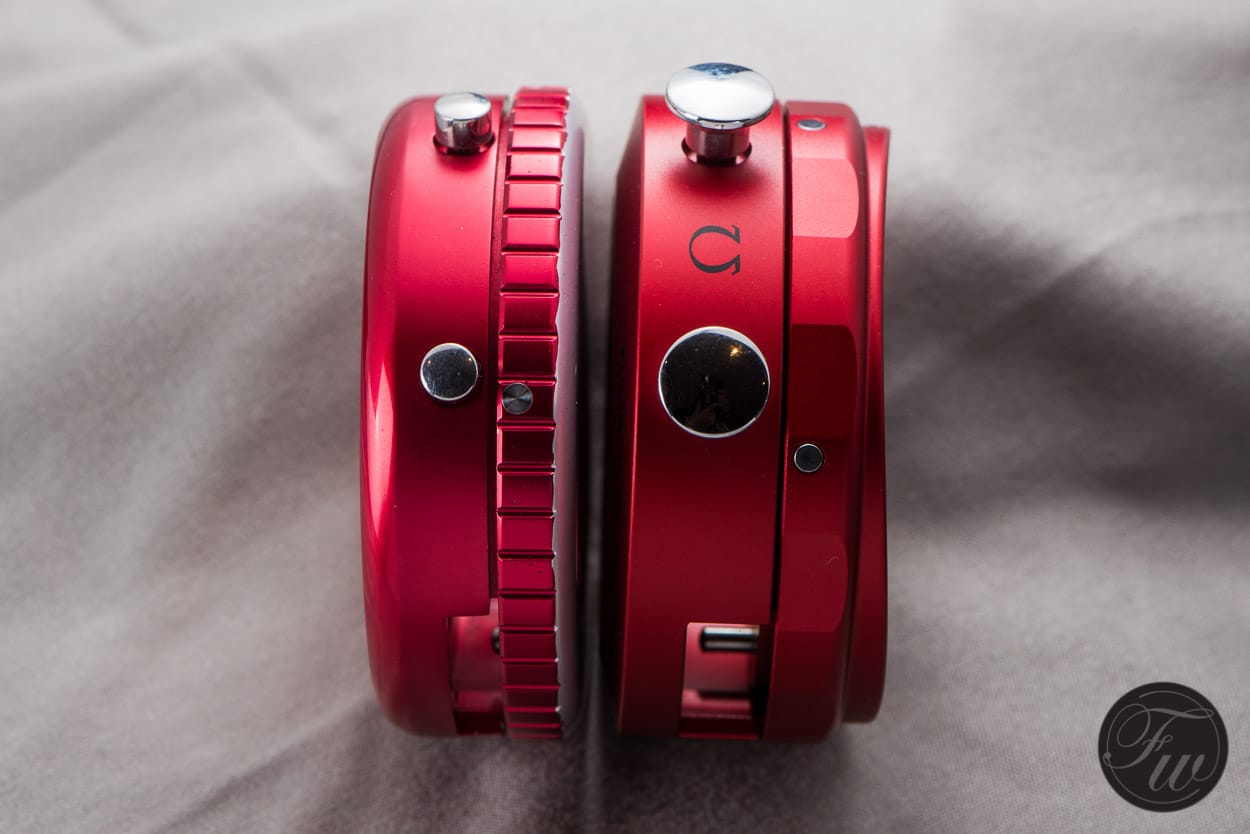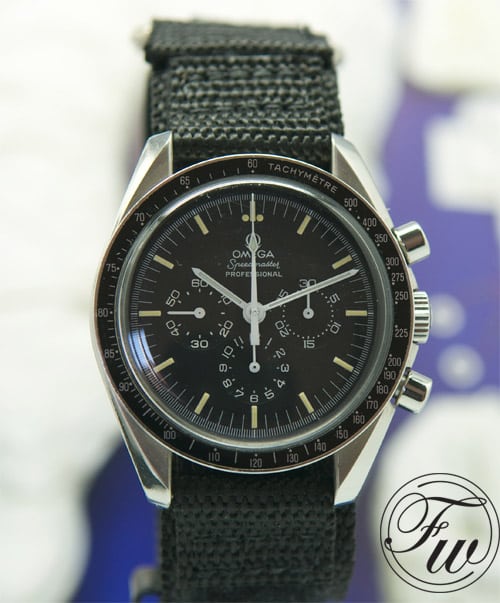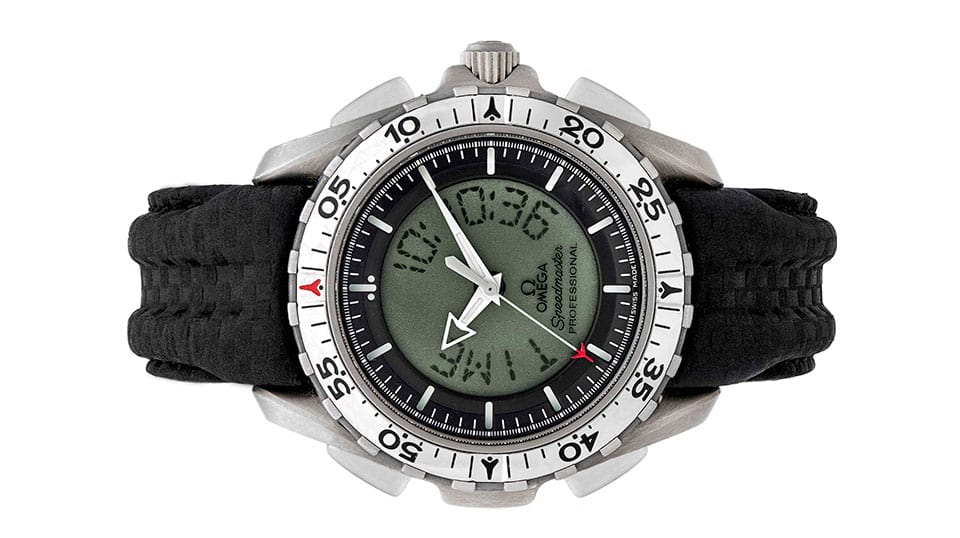Speedy Tuesday – Speedmaster Alaska Project (The Original Alaska II and the 2008 Re-Edition)
Speedmaster Alaska Project
The project name Alaska has little to do with the state, besides its name. Omega used code words for a lot of their projects. This was done not to wake-up other watch companies. You should know that the watchmaking community is not that big, people go to the same bars and restaurants and might overhear certain ‘confidential’ stuff. Especially in the 1960s when Omega was working closely with NASA, they did not want to wake up employees from other watch manufactures for example. Omega often used city, country or state names for secret projects.
Alaska Project
The Alaska Project actually begins by NASA engineer James H. Ragan. We already mentioned Mr Ragan in our story on how the Speedmaster became the Moonwatch, but it doesn’t end there. It was an ongoing process. He had to make sure all the equipment was up to the task. You have to know that temperatures on the Moon can go up to 120 degrees Celsius in the Sun (no atmosphere of course), it had to be shock proof (use on the Lunar Rover) and so on. The first Alaska Project watch that Omega developed, was this crazy big titanium watch.
First Prototype
- Alaska Prototype
- Alaska Prototype
- Alaska Prototype
- Alaska Prototype
As you can see, the design inspired the Speedmaster Professional Mark II watch. This titanium watch had the trustworthy caliber 861 inside, but adjusted for use in extreme temperatures by using special alloys and oil. The dial, as yo can see, is silver white. This was done to have a better reflection of heat (of the Sun). There is no mentioning of Speedmaster on this dial, or Swiss Made. The racing dial pattern was used for the minute track. The rocket shaped hands are also quite interesting. All hands for chronograph functions were in red. This particular prototype also had the red anodized aluminum protective outer case.
The production costs of this watch were very high though, so other prototypes were produced as well.
Speedmaster Alaska Project Watches
One of the prototypes of the first Speedmaster Alaska Project watch, that can be clearly identified as a Speedmaster Professional, is known as the Speedmaster Alaska II watch. This piece, made of stainless steel instead of titanium, was the basis for the later (2008) introduced Speedmaster Alaska Project re-edition model.
For this article, we take a look at both the Alaska II watch and the Speedmaster Alaska Project re-edition watch.
1970 Speedmaster Alaska II Project
The Speedmaster Alaska Project watch that we have here was auctioned in 2007 during the OmegaMania auction. Until 2007, it was owned by Omega and kept in their archives and/or museum. It isn’t exactly clear why Omega decided to auction this watch, but it ended up on the market since then. It is now being offered on the Phillips auction of 12 November, in Geneva.
We had the opportunity to get hands-on with this particular watch. It was also featured during the Ultimate Speedmaster Exhibition of Sacha & Roy Davidoff and pictured in their book (of that event).
Red Outer Case
The Speedmaster Alaska II watch was developed right after the first one of 1969. This piece is almost identical to the Speedmaster ‘Moonwatch’ of that time, in fact, it uses the same case reference (145.022-69). Inside is Omega caliber 861, the hand-wound Lemania based chronograph movement. It isn’t exactly clear to us why the first prototype in titanium had this weird case shape. Whether it was done for a specific reason regarding shocks or other technical requirements or that it was purely functional, we don’t know. What stayed was the red anodized aluminum outer case, to protect the watch from the high temperatures (up to 120 celsius in direct Sun light).
Different Scales
The red anodized aluminum case has a 60 minute scale and the tachymeter scale basically became unusable. That said, the tachymeter scale is of no real use in space anyway (correct me when I am wrong). A 60 minute scale makes more sense, using it to mark a certain time by using the minute hand. The later prototype of Alaska had a 0-60 bezel instead of the tachymeter scale bezel. See below.
Interesting fact is that the 1970 Speedmaster Alaska II also uses the rare ‘220’ tachymeter bezel. This is, in fact, a bezel with an error. There should be a ‘200’ where it says ‘220’. Regular Speedmaster 145.022-69 references (of 1970) with this specific faulty bezel fetch a bit more than correct ones, needless to say. It is rather interesting that Omega decided to use this bezel for one of their prototype watches.
- Clean Speedmaster caseback
The dial of the watch – although its color is similar to the first prototype – is a bit different as the first model was not marked as Speedmaster, had a different dial shape and applied markers instead of printed. The hands remained similar. The rocket style sub dial chronograph hands, red chronograph seconds hand and black hour and minute hands. The rocket hands changed from red to black, as you can see. Currently, we don’t know if these watches were put to the test by NASA. The common believe is that there are only very few of these Alaska II watches, and that this is just one of the three existing pieces.
This watch comes with an Omega extract of the archives.
Speedmaster Professional Alaska Project 2008
In 2008, Omega introduced their Speedmaster Alaska Project 2008 watch. We talked about it here couple of times (here and here), but let’s compare it to the original Alaska II for a bit. Omega seems to be mastering the art of doing retro models since a couple of years (an example can be found in our PloProf 600M vs PloProf 1200M comparison article). A re-edition of a prototype is something interesting in our opinion, as not many other brands have done this.
Case and Movement
The case of the original Speedmaster Alaska II was based on the regular 145.022-69. The new model has the regular Speedmaster case, 145.0022 (case reference, not watch reference!) which was similar to the (at that time) Speedmaster reference 3570.50. What was different, was the dial of course and the caseback. The caseback had the “Flight-qualified by NASA for all manned space missions” engraving, but also an additional engraving of “Alaska Project Limited Series” with the unique number engraved. Only 1970 pieces were made.
Caliber 1861
Where the original 1970 Speedmaster Alaska II has the caliber 861 movement, the 2008 limited edition features the caliber 1861 movement. This movement, based on the same Lemania chronograph base movement, is still being used in today’s ‘Moonwatch’. Omega changed from 861 to 1861 in 1997. The caliber 1861 has a rhodium finish, where the earlier 861 movements had a copper color. The 861 movement in the 1970 Speedmaster probably still has the steel chronograph brake, where the 1861 uses the Delrin brake. The caliber861 movement also has 18 jewels instead of 17. Only small upgrades to the hand-wound Moonwatch movements were made between 1970 and 2008, but for the untrained eye only the color of the movement will be different.
White Dial and Rocket Hands
The 2008 limited edition of the Speedmaster Alaska Project has a white dial as well as the black rocket hands for the chronograph sub dials and a red chronograph hand. What changed, of course, is the use of Super-LumiNova instead of tritium, hence the yellow-ish hour markers on the 1970 model. The bezel on the 2008 edition we have in our article isn’t the original tachymeter. Instead, there’s a telemetre bezel installed.
New Red Anodized Aluminum Case
As you can see on the images, the new red outer case is a tad bit different from the original one. Specifications tell us that it is also resistant to temperatures from -148 degrees celsius to +260 degrees celsius, it looks a bit different from the 1970 Alaska II red outer case. There is some text on the case, saying it is the “Alaska Project” watch and what it is “Outer space extreme temperature instrument”, but also the scale is done in a different way. On the back side, it is different as well, as the original one is just in aluminum color and the new one is all red.
The new case is also a bit thicker than the original red anodized aluminum case and the pushers have a different shape.
Other Alaska Watches
As written above, the Alaska was a code name for everything NASA at Omega. A few years ago, we showed you the Speedmaster watch of Space Shuttle astronaut Reinhard Furrer. It had the radial dial and caseback with NASA serial and product numbers. This Alaska III project was from the 1970s for re-certification as an EVA watch for the Space Shuttle program. In 1978 the Speedmaster got re-certified once more and Omega send 56 pieces to NASA for use during the Space Shuttle program.
Later on, from 1979 onwards, Omega created a new prototype for NASA purposes. Alaska IV was born. It was based on the Speedmaster LCD models from a couple of years earlier (1977). However, a modification was done to these watches, to also have a lit display for the chronograph. Omega sent a couple of these digital versions to NASA for testing. Two of these watches were offered last year in Christie’s Speedmaster 50 auction.

After the Alaska IV it didn’t go silent, but Alaska wasn’t used anymore as codeword. In the mid-1990s it was decided by astronauts they needed a new watch with some useful functions during space traveling. Omega came up with the Speedmaster X-33, tested by pilots, astronauts and cosmonauts.
However, the Speedmaster Professional remains the only watch certified for EVA (extra vehicular activity) by NASA.
Some Thoughts
This article does not only show you the uniqueness of the Alaska II or the comparison of that specific watch and the 2008 re-edition. No, it also shows you that the Speedmaster allows you to go crazy (as the estimate by Phillip’s is somewhere between 100,000 and 200,000 Swiss Francs (91,8K – 184K Euro), but also that Omega enables you to go more gentle on your wallet and get a very nicely done re-edition. Of course, the trick is that you need to move fast on Omega’s limited edition Speedmaster watches these days. In 2008, this watch retailed for around 5,500 USD, today you have to search for one and you might find one around 6,500 USD.

